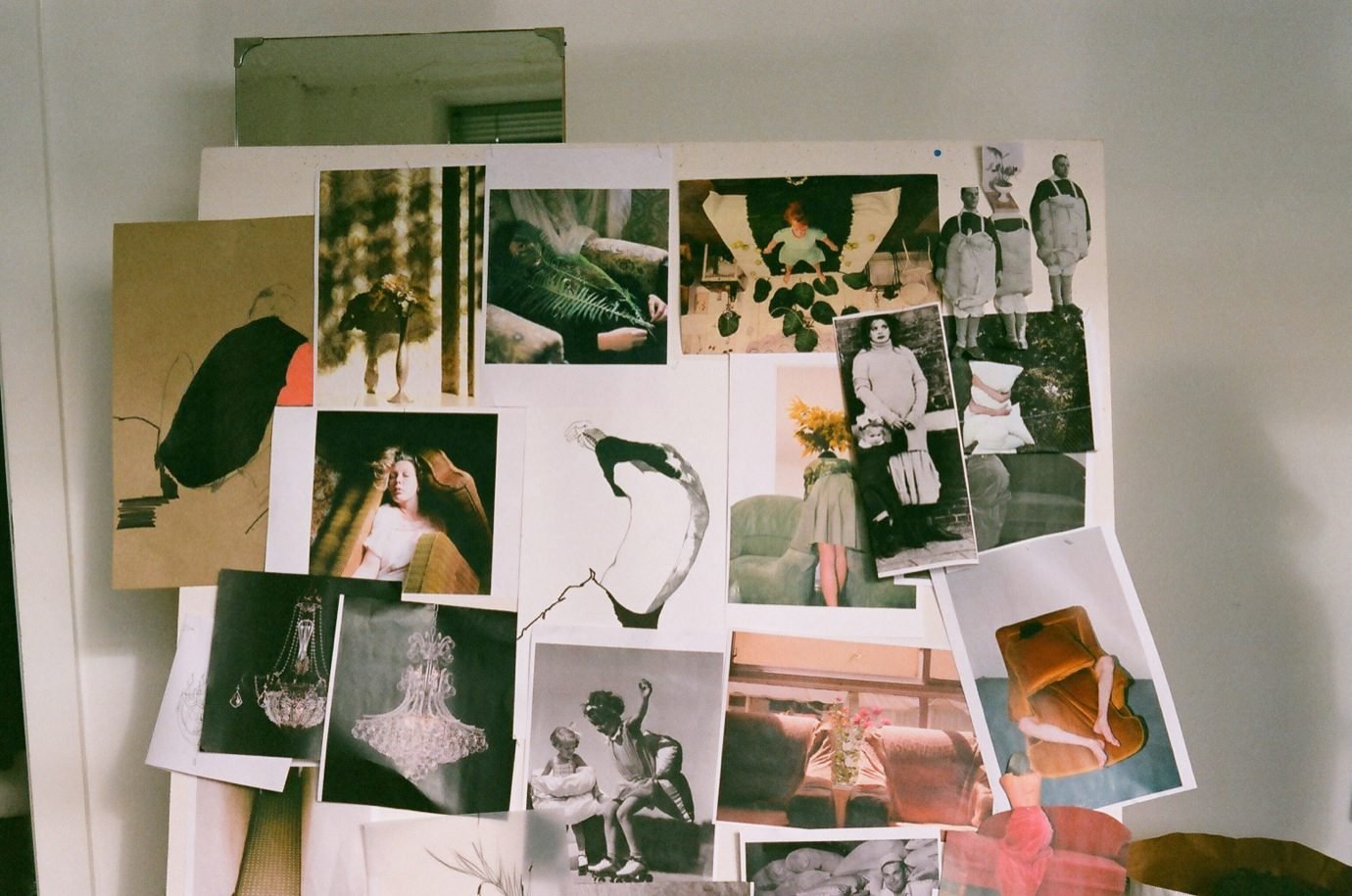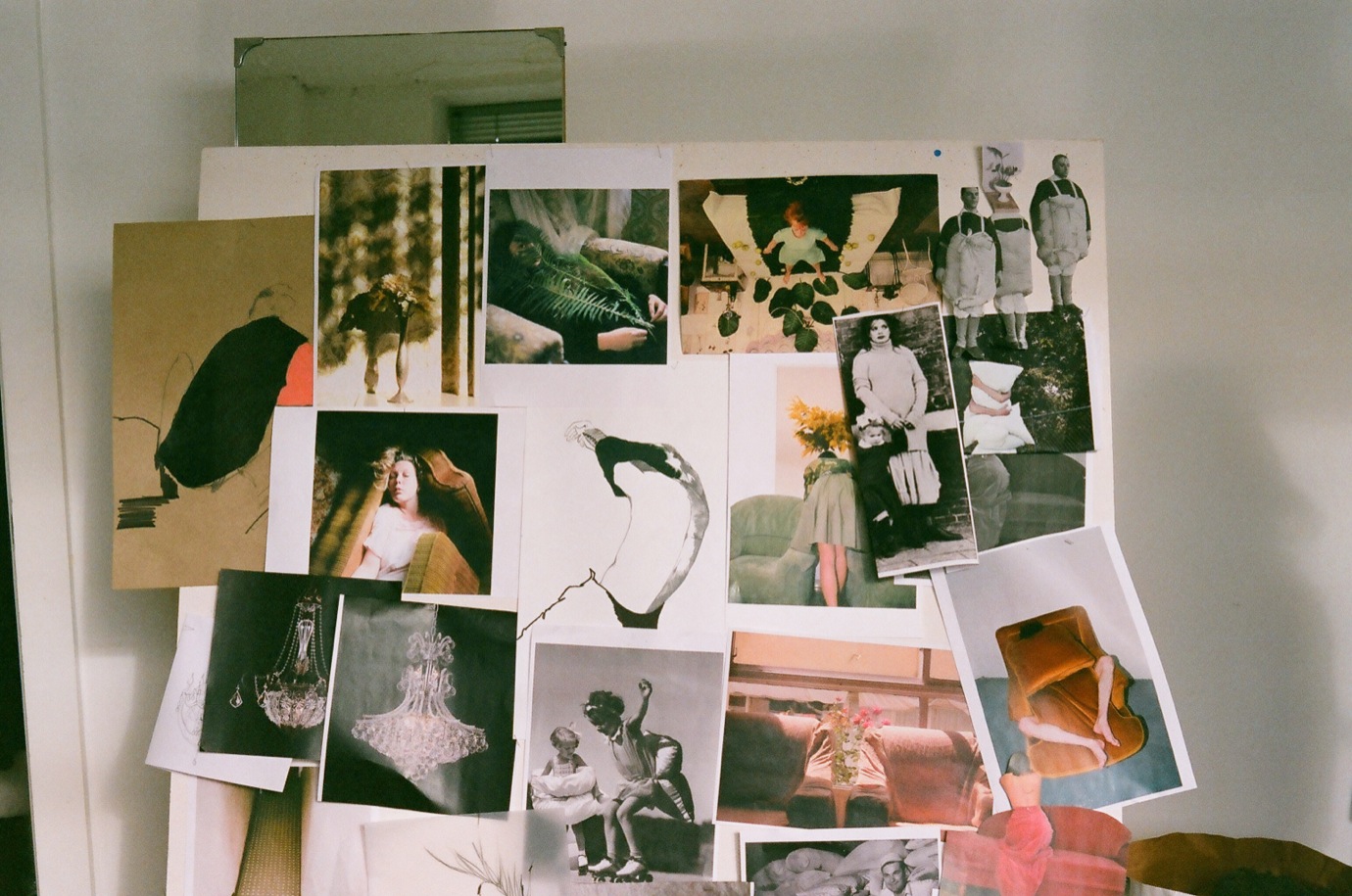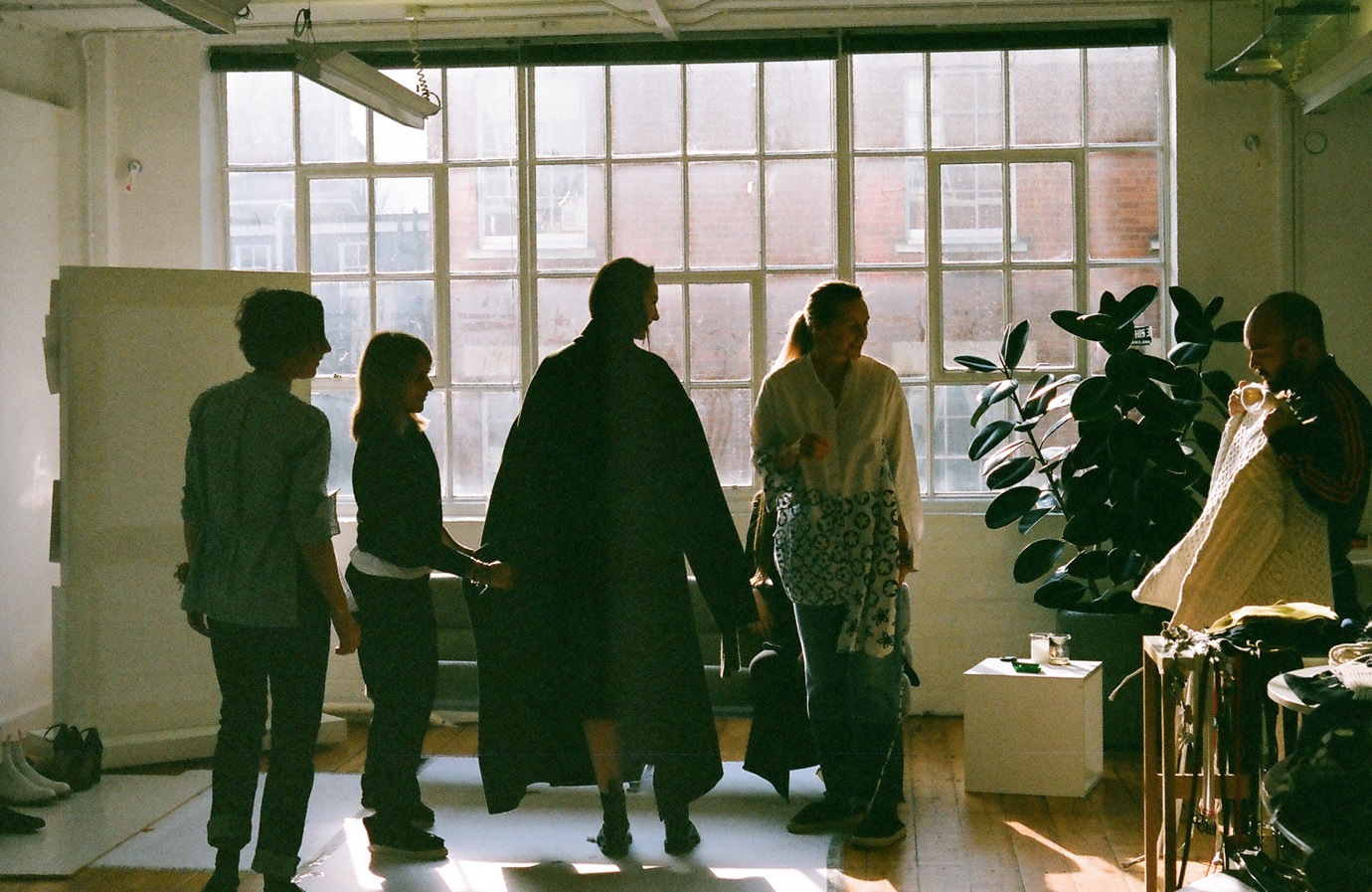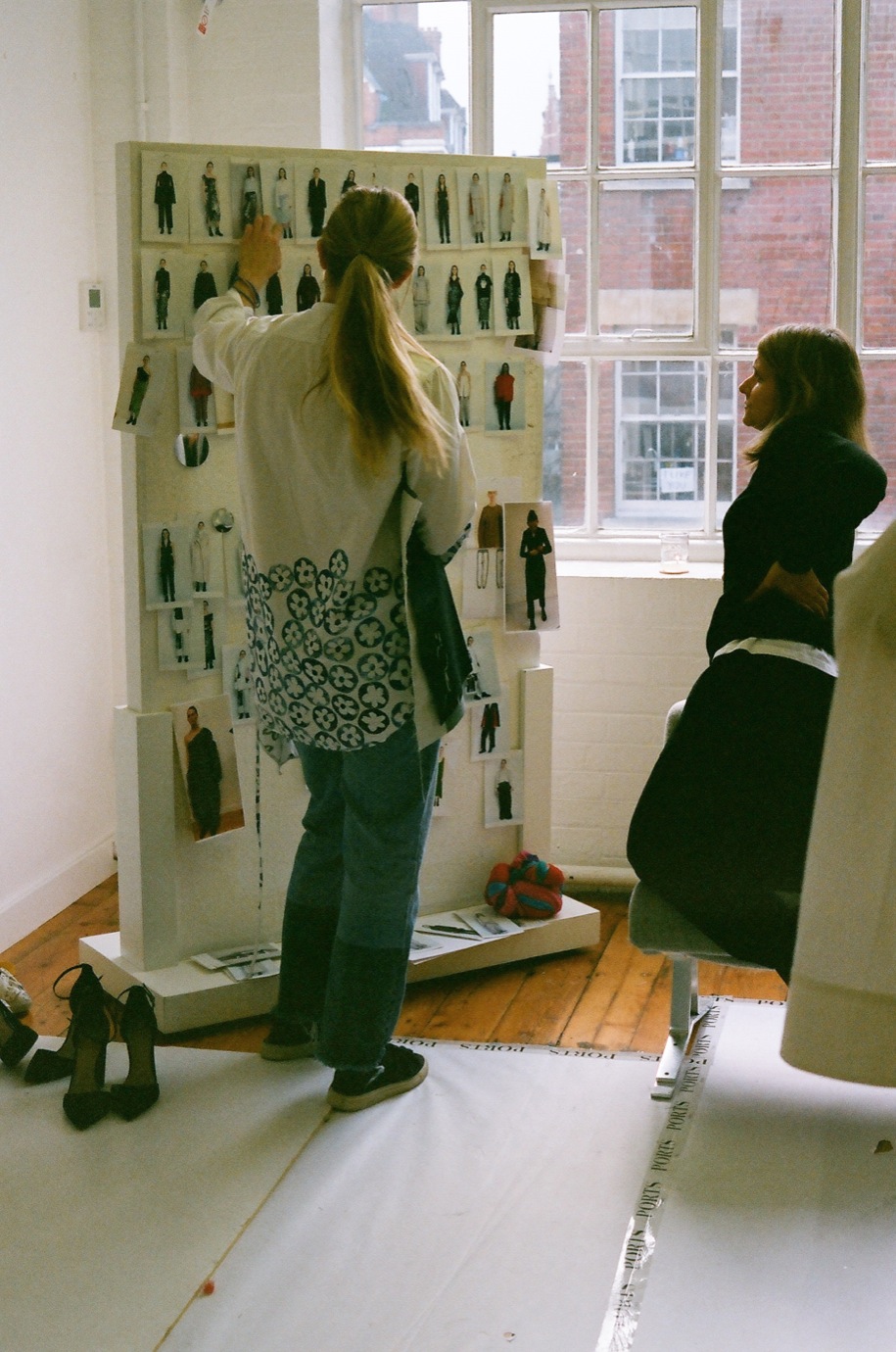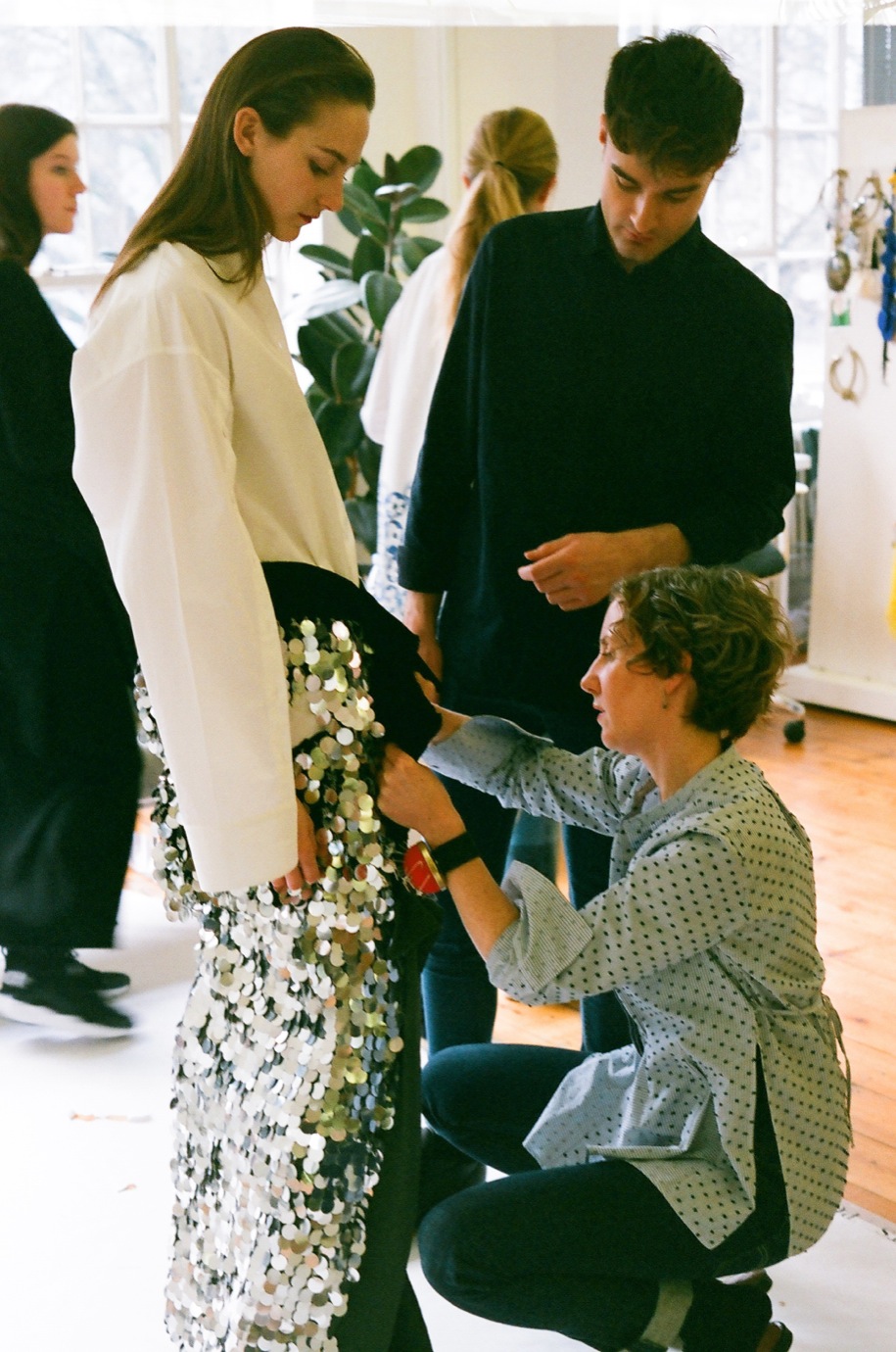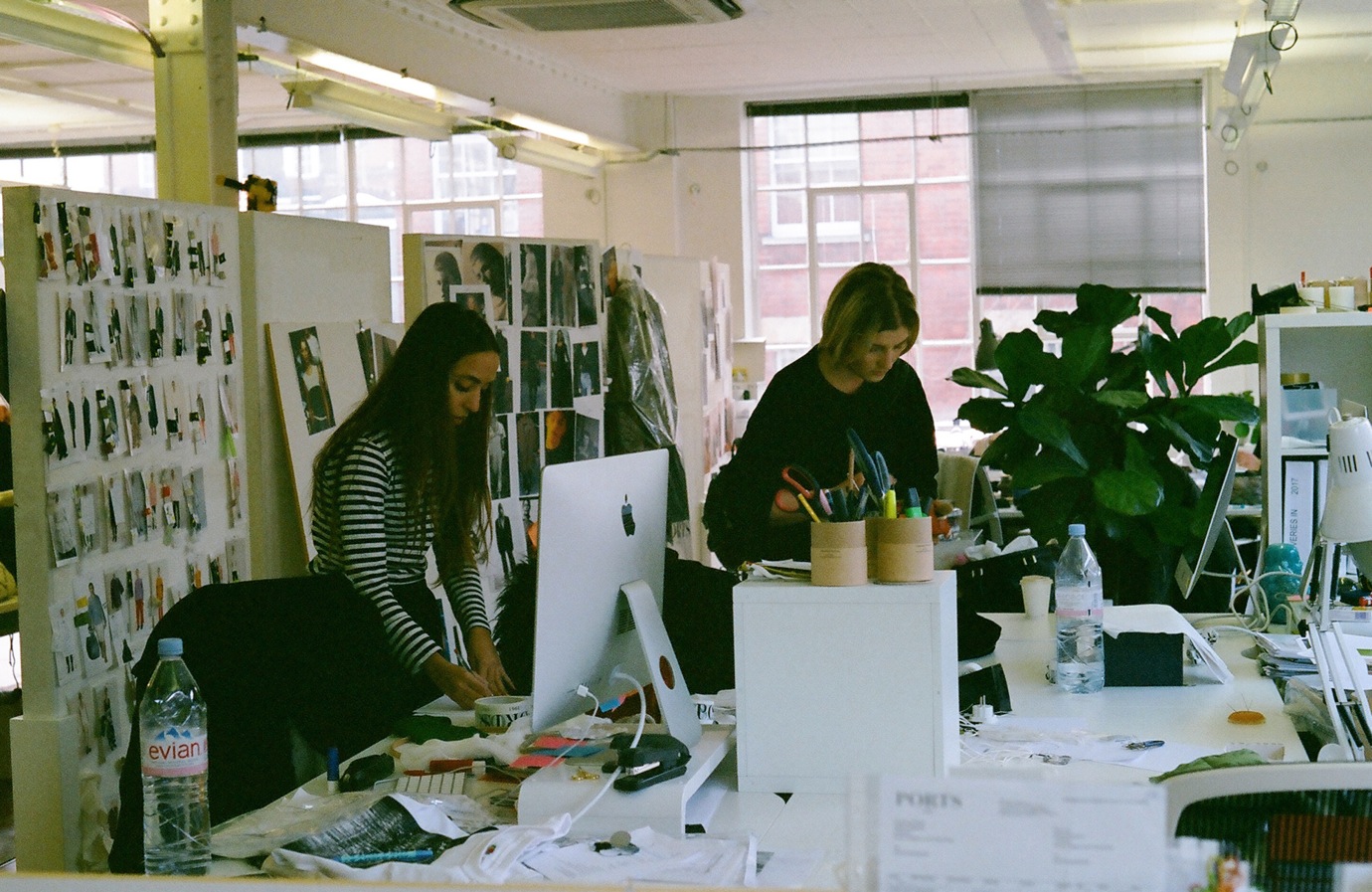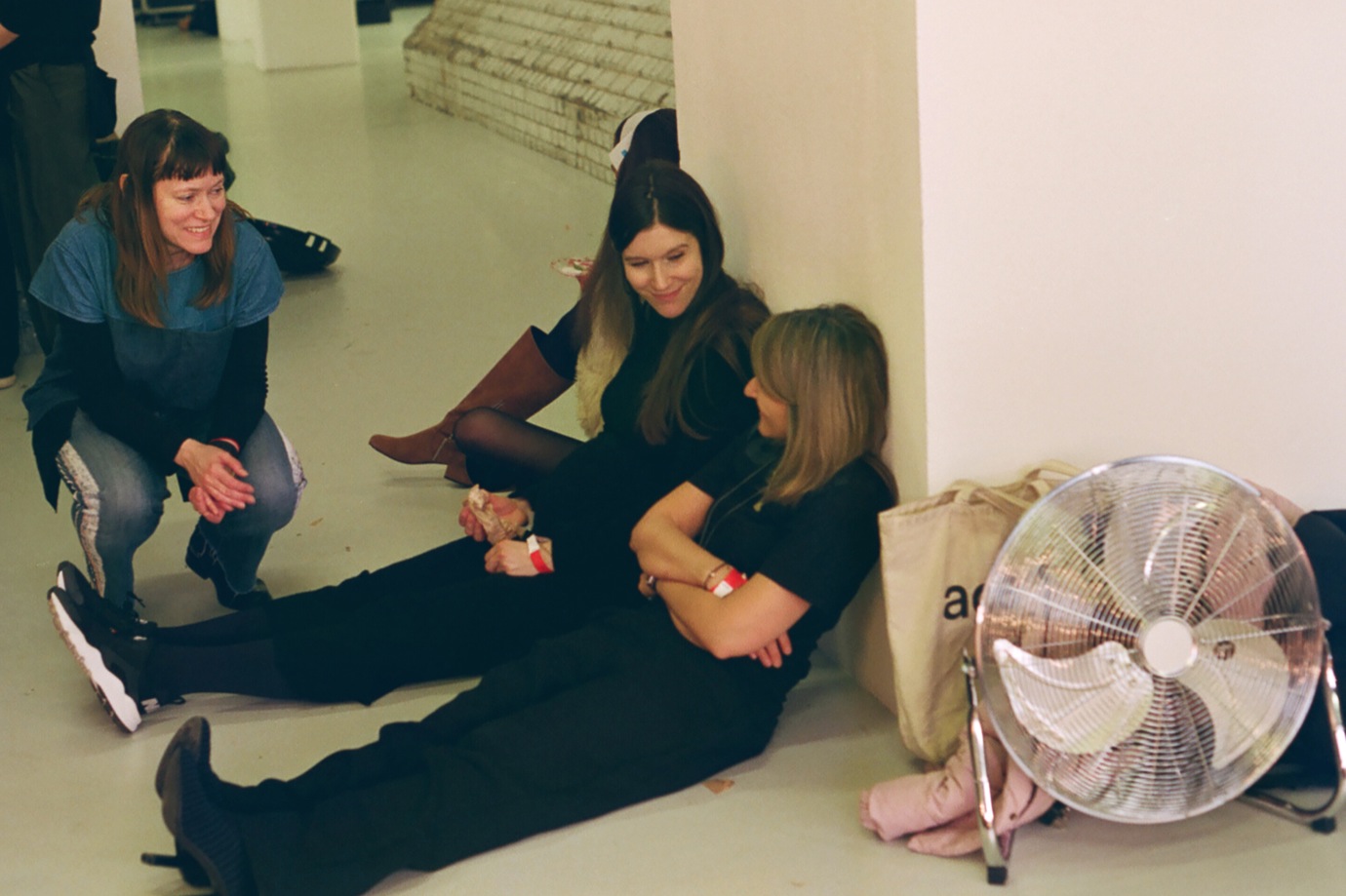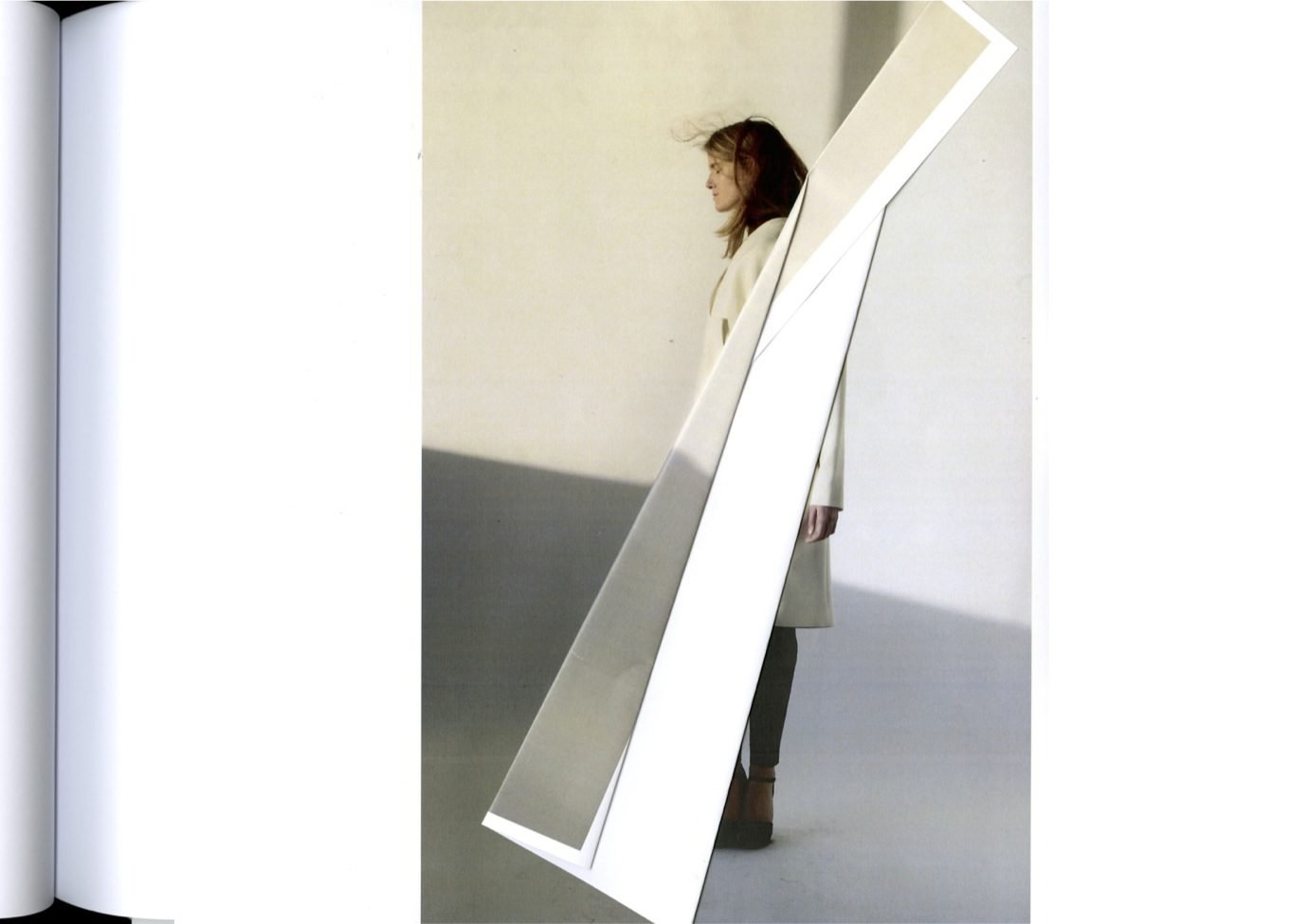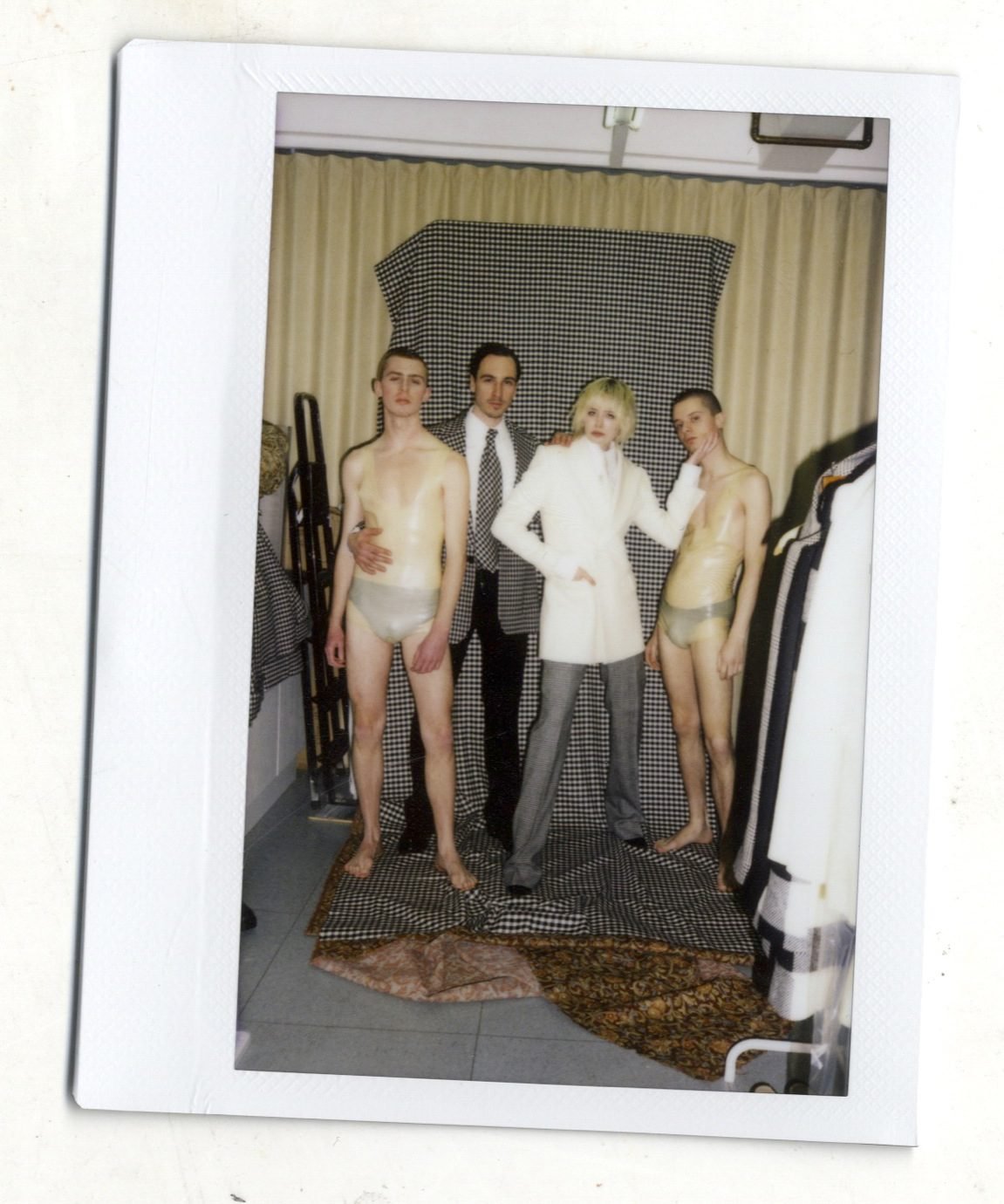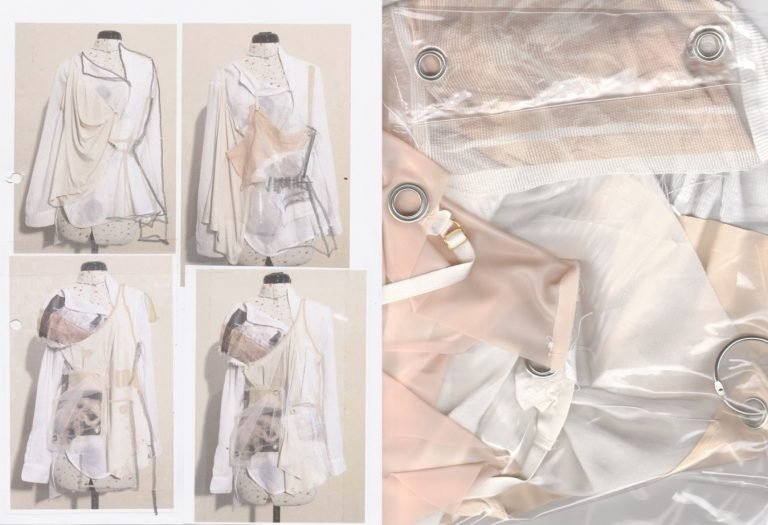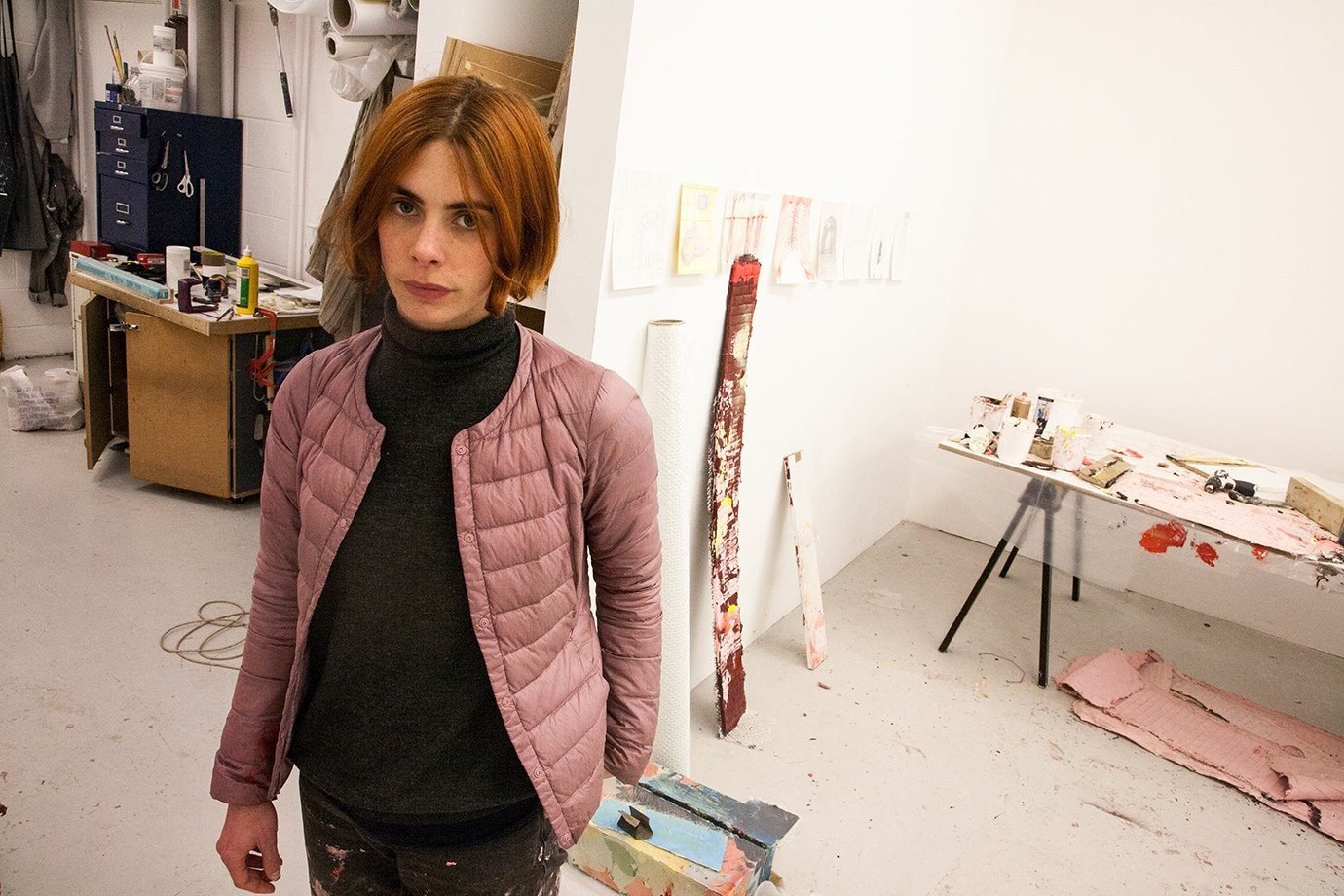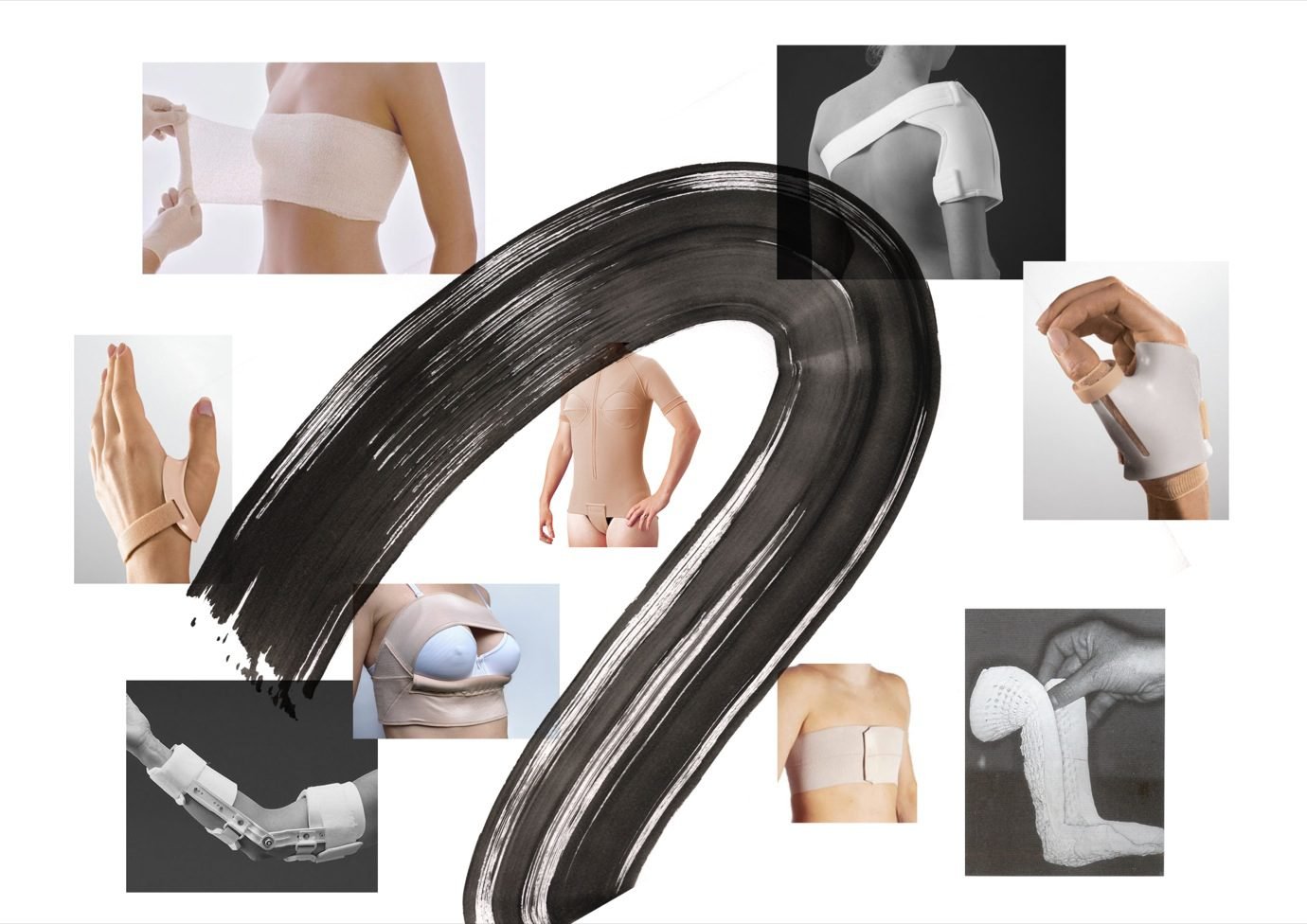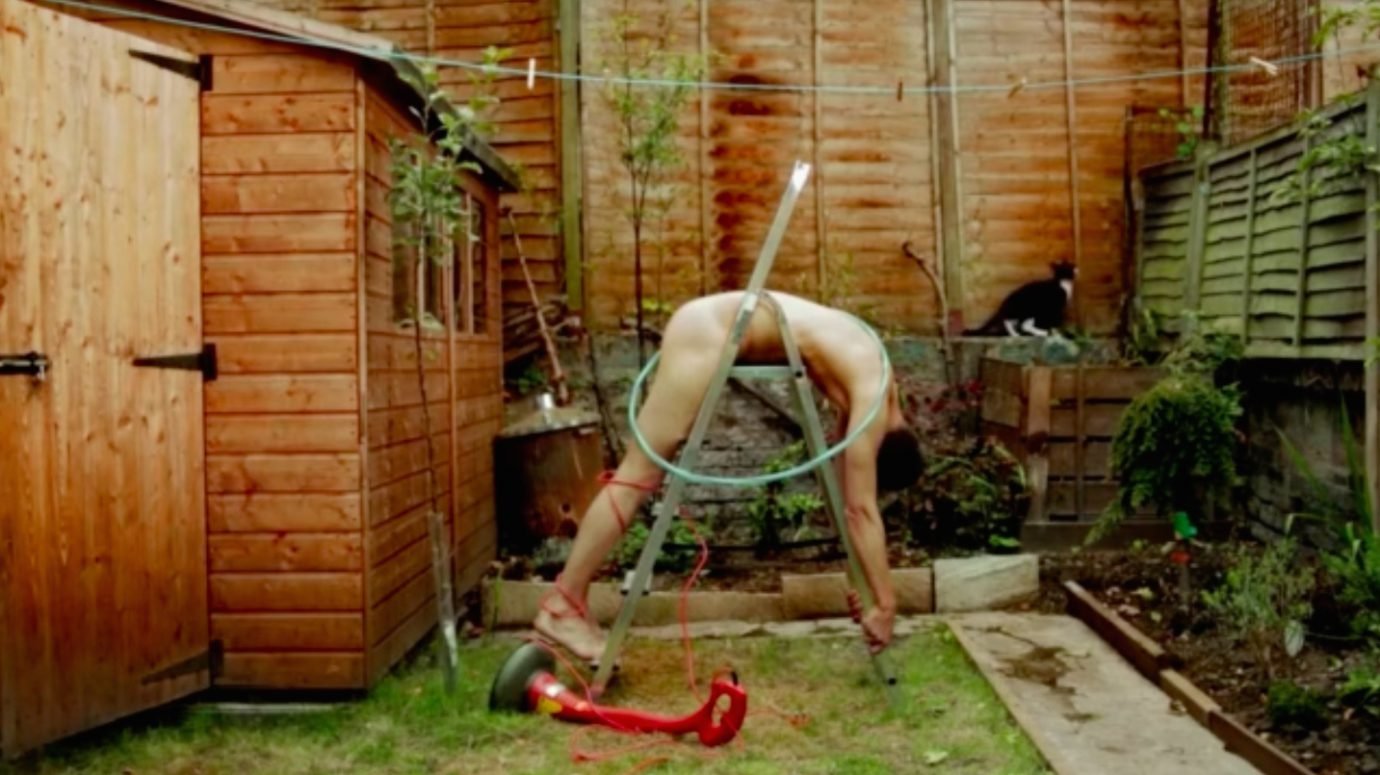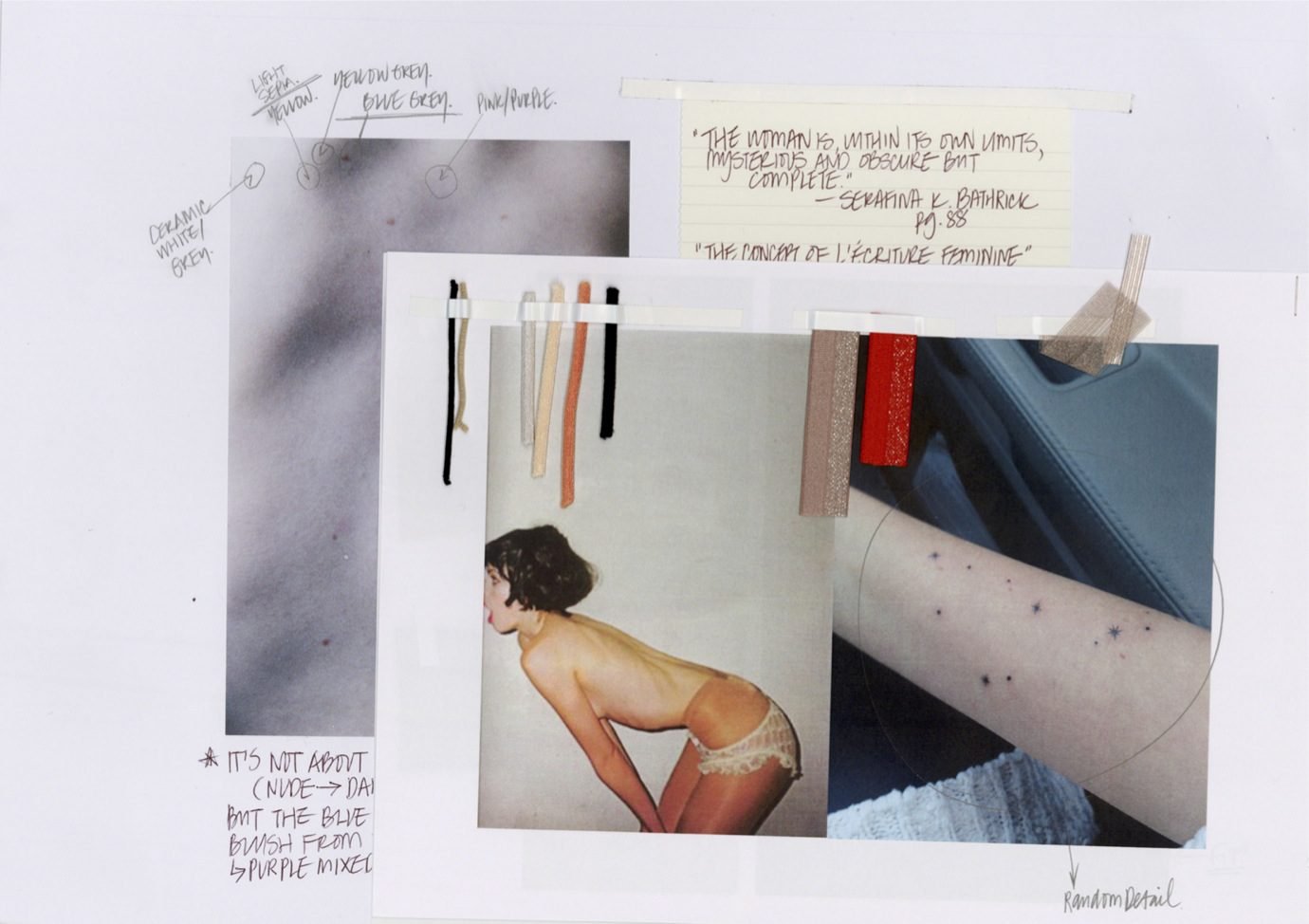The near-magical atmosphere of Ports1961 even has its own fairy godfather. Louise Wilson’s legendary presence can be felt throughout the workshop, and not just because Natasa has her portrait hanging on the wall. Wilson was actually intended to be involved in the Ports project before she passed away. “There’s not a day that I don’t think of her because she gave me so much,” Natasa explains softly. She also attributes the shared visual codes of many of her team to her old friend and mentor. “It’s like we speak a secret language. The secret visual language of Louise Wilson. That’s a very nice thing to have.”
A sense of harmonious communication certainly pervades the design space, perhaps aided by the bright airiness and neat lines of garments, though Rosa, a pattern cutter, warns me that this is not normal: “usually it looks like a bomb has just gone off.” As we speak to the team, they all reference Louise and the creative systems they share. Even the latest interns from the Central Saint Martins BA Fashion feel the Wilson legacy despite never having worked with her. Dominika, another warm and friendly member of the team, is excited to talk about the creative process: “When someone here says: ‘Okay I need a mood board’, you know exactly what the person wants, because we all went through the same drill, so you don’t do something like… ,” she completes the thought by pulling a face and laughing. Melody, another CSM BA intern nods along with Dominika’s exuberant stories before chipping in quietly: “It’s a very trusting and inclusive environment. You just understand each other.”

